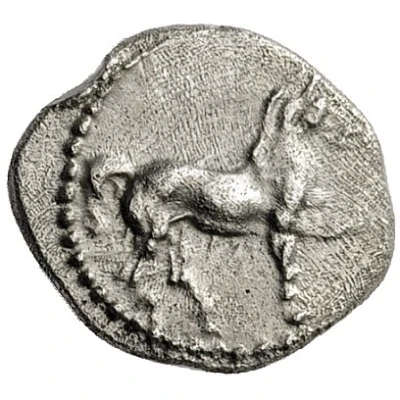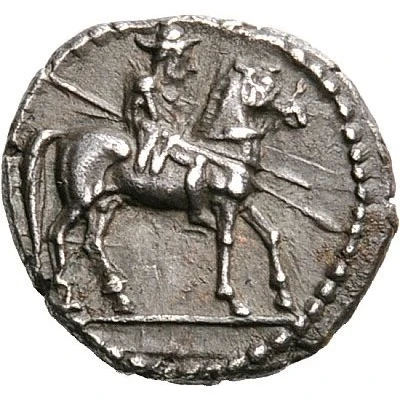


© Nomos AG
Obol 344 BC - 337 BC
| Silver | 0.80 g | 13.0 mm |
| Issuer | Larissa (Thessaly) |
|---|---|
| Type | Standard circulation coin |
| Years | 344 BC - 337 BC |
| Value | Obol (⅙) |
| Currency | Drachm |
| Composition | Silver |
| Weight | 0.80 g |
| Diameter | 13.0 mm |
| Thickness | 1.3 mm |
| Shape | Round (irregular) |
| Technique | Hammered |
| Demonetized | Yes |
| Updated | 2024-10-10 |
| Numista | N#171092 |
|---|---|
| Rarity index | 95% |
Reverse
Horse feeding to right, with straight legs
Script: Greek
Lettering:
ΛΑΡΙΣ
ΑΙΩΝ
Comment
Herrmann Group VII, pl. V, 19.
Interesting fact
The Obol coin was used as a form of currency in ancient Greece, specifically in the city-state of Larissa (Thessaly) during the 4th century BC. The word "obol" comes from the Greek word "obelos," which means "roasting spit," and it's believed that the coin was named after the shape of a spit because the early obols were made in the shape of a long, thin strip of metal. Over time, the design of the coin evolved to feature an image of a horse on one side and a flower on the other, as seen on the Standard circulation coin Obol (344 BC - 337 BC) from Larissa (Thessaly).



